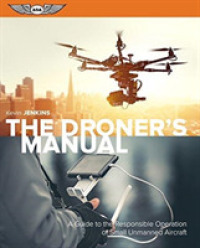- ホーム
- > 洋書
- > ドイツ書
- > Mathematics, Sciences & Technology
- > Mathematics
- > miscellaneous
Full Description
From the very beginning in the late 1950s of the basic ideas of optimal control, attitudes toward the topic in the scientific and engineering community have ranged from an excessive enthusiasm for its reputed capability ofsolving almost any kind of problem to an (equally) unjustified rejection of it as a set of abstract mathematical concepts with no real utility. The truth, apparently, lies somewhere between these two extremes. Intense research activity in the field of optimization, in particular with reference to robust control issues, has caused it to be regarded as a source of numerous useful, powerful, and flexible tools for the control system designer. The new stream of research is deeply rooted in the well-established framework of linear quadratic gaussian control theory, knowledge ofwhich is an essential requirement for a fruitful understanding of optimization. In addition, there appears to be a widely shared opinion that some results of variational techniques are particularly suited for an approach to nonlinear solutions for complex control problems. For these reasons, even though the first significant achievements in the field were published some forty years ago, a new presentation ofthe basic elements ofclassical optimal control theory from a tutorial point of view seems meaningful and contemporary. This text draws heavily on the content ofthe Italian language textbook "Con trollo ottimo" published by Pitagora and used in a number of courses at the Politec nico of Milan.
Contents
1 Introduction.- 2 The Hamilton-Jacobi theory.- 3 The LQ problem.- 4 The LQG problem.- 5 The Riccati equations.- 6 The Maximum Principle.- 7 Second variation methods.- A Basic background.- A.1 Canonical decomposition.- A.2 Transition matrix.- A.3 Poles and zeros.- A.4 Quadratic forms.- A.5 Expected value and covariance.- B Eigenvalues assignment.- B.1 Introduction.- B.2 Assignment with accessible state.- B.3 Assignment with inaccessible state.- B.4 Assignment with asymptotic errors zeroing.- C Notation.- List of Algorithms, Assumptions, Corollaries.








